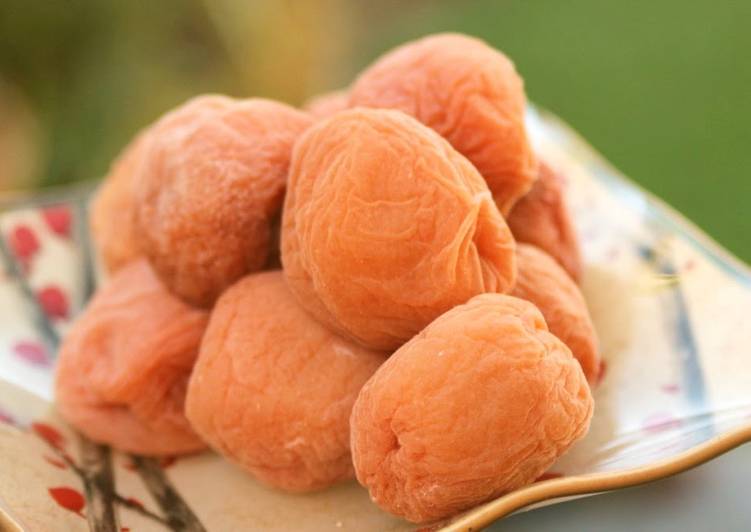Even Abroad! Not Umeboshi Pickled Plum, but Pickled Apricot. Mix the salt and citric acid. Carefully wash the apricots and dry well with a paper towel. Remove the stem with a toothpick.
 Not Umeboshi Pickled Plum, but Pickled Apricot Recipe by cookpad.japan.
Not Umeboshi Pickled Plum, but Pickled Apricot.
Japanese ingredients are hard to find when living overseas.
You can Cook Even Abroad! Not Umeboshi Pickled Plum, but Pickled Apricot using 4 ingredients and 11 steps. Here is how you cook that.
Not Umeboshi Pickled Plum, but Pickled Apricot Recipe by cookpad.japan.
Not Umeboshi Pickled Plum, but Pickled Apricot.
Japanese ingredients are hard to find when living overseas.
You can Cook Even Abroad! Not Umeboshi Pickled Plum, but Pickled Apricot using 4 ingredients and 11 steps. Here is how you cook that.
Ingredients of Even Abroad! Not Umeboshi Pickled Plum, but Pickled Apricot
- Lets Go Prepare 1 kg of Apricots.
- Lets Go Prepare 180 grams of Salt (18% of the apricots).
- What You needis 30 grams of Citric Acid (3% of the apricots).
- What You needis 1 of Vodka.
Even if they are available they are usually expensive or not from Japan etc. Umeboshi is sour pickled plum and has been eaten for over a thousand years in Japan. Ripened plums are marinaded with salt, sun-dried, and preserved for a couple of months to develop the flavor. Initially, the preserved plums are actually yellow, not the familiar red you typically see Umeboshi.
Even Abroad! Not Umeboshi Pickled Plum, but Pickled Apricot instructions
- Mix the salt and citric acid.
- Carefully wash the apricots and dry well with a paper towel. Remove the stem with a toothpick..
- Wipe the apricots from Step 2 with a vodka-soaked paper towel. (This is to prevent mold from forming).
- Add Steps 1 and 3 alternatively to a sterilized bottle. (Sterilize the bottle by boiling and wiping with vodka.) Store as-is for a month in your pantry..
- During storage water will form so shake the bottle about one a day to spread the liquid. The picture shows two days after making. The volume has decreased..
- When they are well-pickled, put them outside to dry them out. On the first day they will be prone to sticking to the net so turn them over soon..
- If you put the pickled apricots back into Step 5's bottle on the first evening after leaving them out, they will become soft, but if they have already softened you don't have to worry. You can take them inside..
- They will be done on the 2nd or 3rd day of drying out. Try not to get them wet with rain or other moisture. The picture of the basket in Step 6 or 9's bottle is fine. The salt will spread gradually..
- .
- I promptly used some in an onigiri rice ball. The color was slightly yellow but the flavor was like a tart, salty umeboshi pickled plum. They turned out well and mold-free..
- If you have red shiso, prime them by rubbing with salt to remove bitterness and add them to Step 5 when the liquid starts to form. The shiso-addition gave me a good result..
The umeboshi pickled plum brings a myriad of health benefits to offset hangovers, sugar crashes, blood acidity, digestive "Umeboshi" translated in English as, "Japanese salt plums" is actually related to the apricot. Umeboshi is pickled in barrels outdoors along with shiso leaves and sea salt. This month's Japan Times article is about umeboshi, the sour-salty pickled fruit (usually called a pickled plum, though it's actually more related to an apricot) that's practically a national symbol. Umeboshi are actually a pickled delicacy made from a fruit called 'ume'. The fruit is something like a cross between an apricot and a plum.